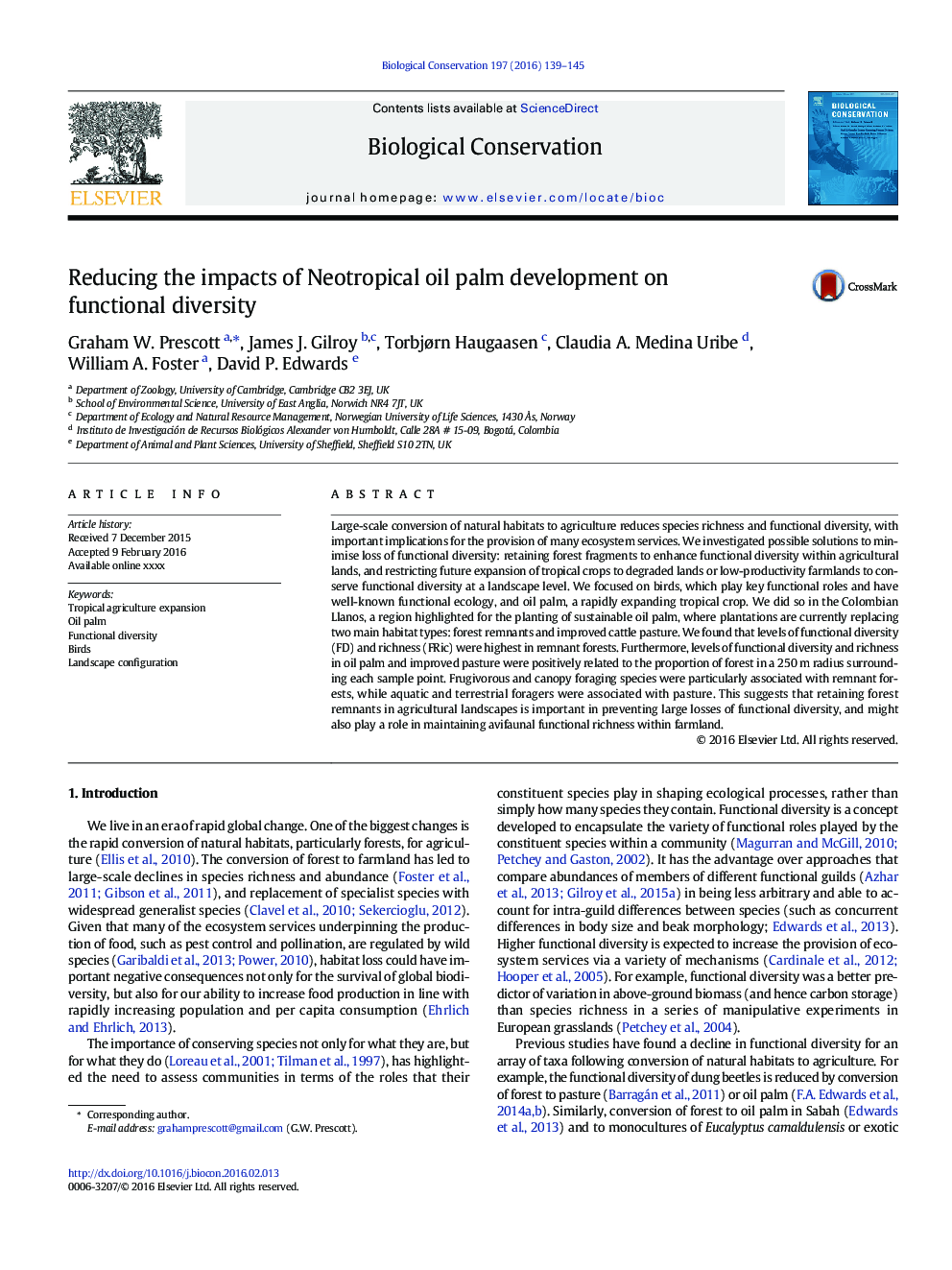| Article ID | Journal | Published Year | Pages | File Type |
|---|---|---|---|---|
| 6298411 | Biological Conservation | 2016 | 7 Pages |
Abstract
Large-scale conversion of natural habitats to agriculture reduces species richness and functional diversity, with important implications for the provision of many ecosystem services. We investigated possible solutions to minimise loss of functional diversity: retaining forest fragments to enhance functional diversity within agricultural lands, and restricting future expansion of tropical crops to degraded lands or low-productivity farmlands to conserve functional diversity at a landscape level. We focused on birds, which play key functional roles and have well-known functional ecology, and oil palm, a rapidly expanding tropical crop. We did so in the Colombian Llanos, a region highlighted for the planting of sustainable oil palm, where plantations are currently replacing two main habitat types: forest remnants and improved cattle pasture. We found that levels of functional diversity (FD) and richness (FRic) were highest in remnant forests. Furthermore, levels of functional diversity and richness in oil palm and improved pasture were positively related to the proportion of forest in a 250Â m radius surrounding each sample point. Frugivorous and canopy foraging species were particularly associated with remnant forests, while aquatic and terrestrial foragers were associated with pasture. This suggests that retaining forest remnants in agricultural landscapes is important in preventing large losses of functional diversity, and might also play a role in maintaining avifaunal functional richness within farmland.
Related Topics
Life Sciences
Agricultural and Biological Sciences
Ecology, Evolution, Behavior and Systematics
Authors
Graham W. Prescott, James J. Gilroy, Torbjørn Haugaasen, Claudia A. Medina Uribe, William A. Foster, David P. Edwards,
